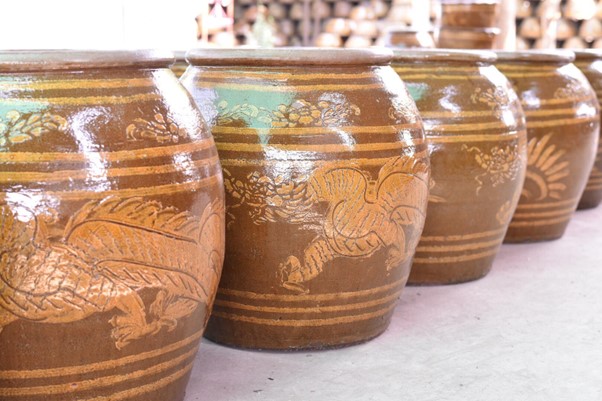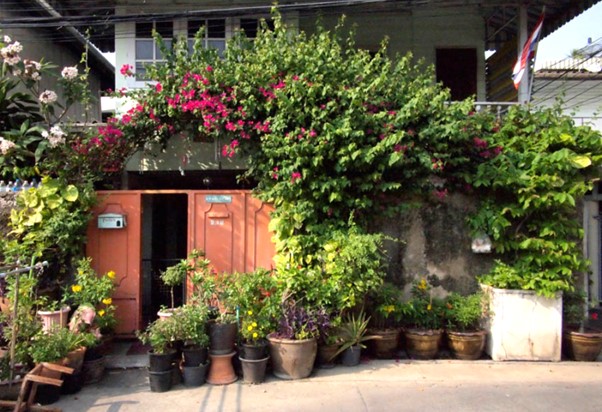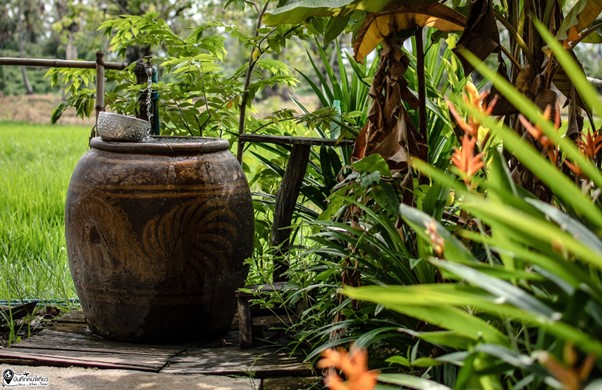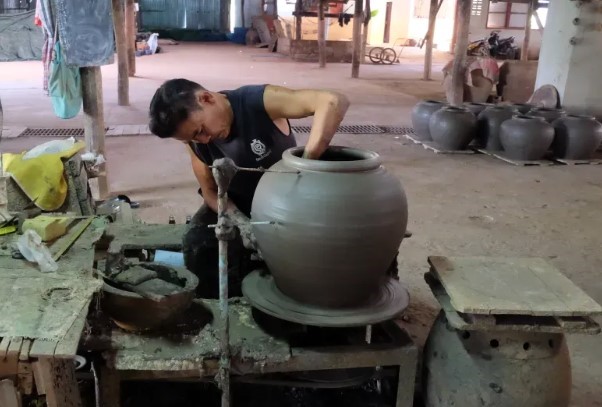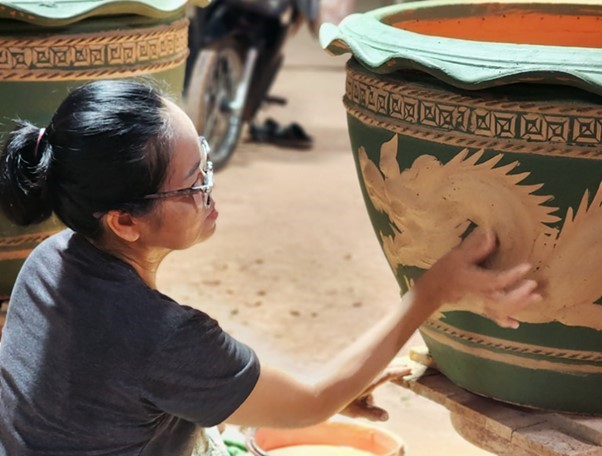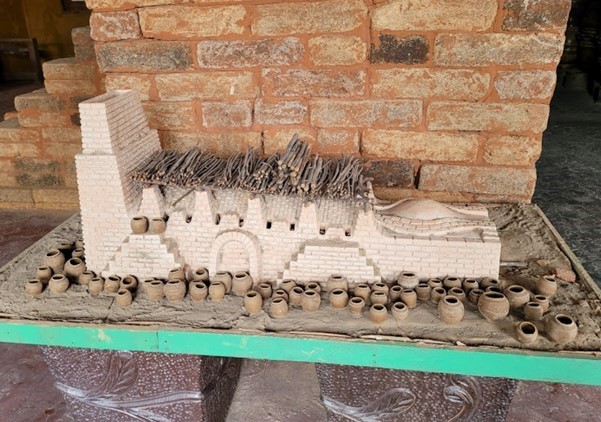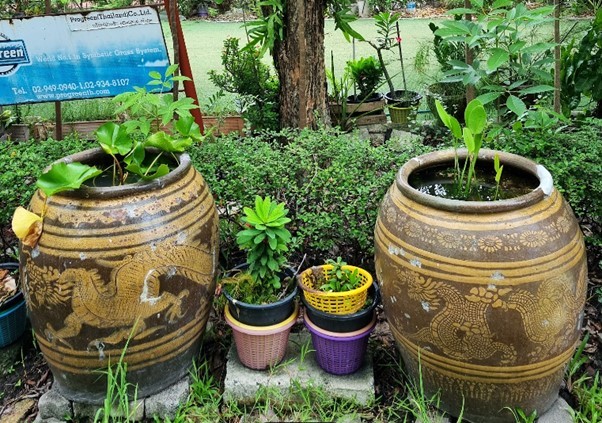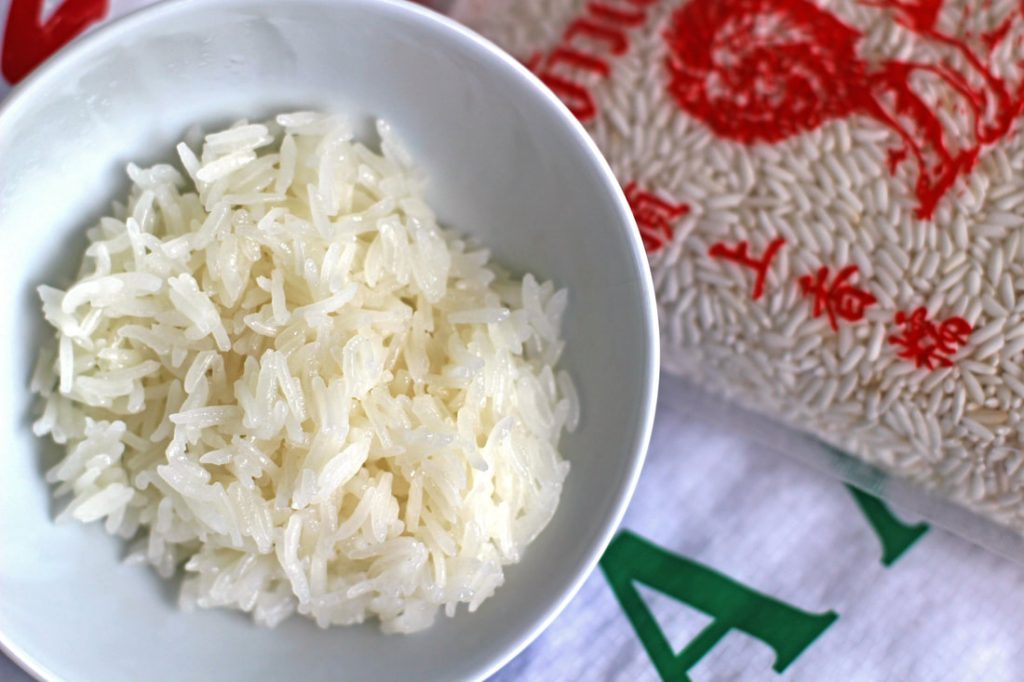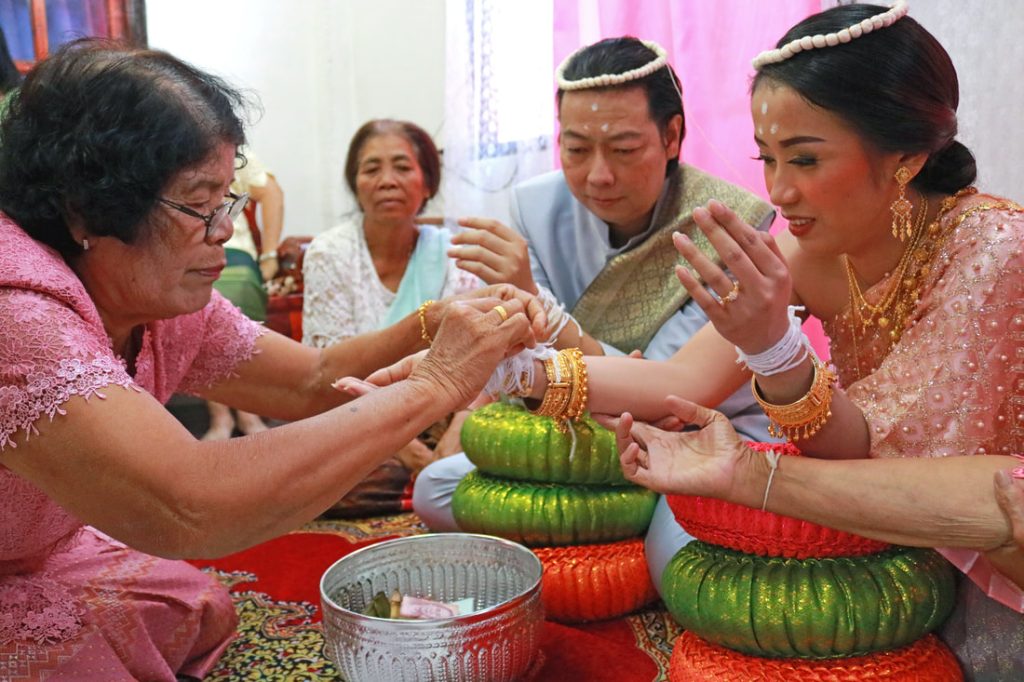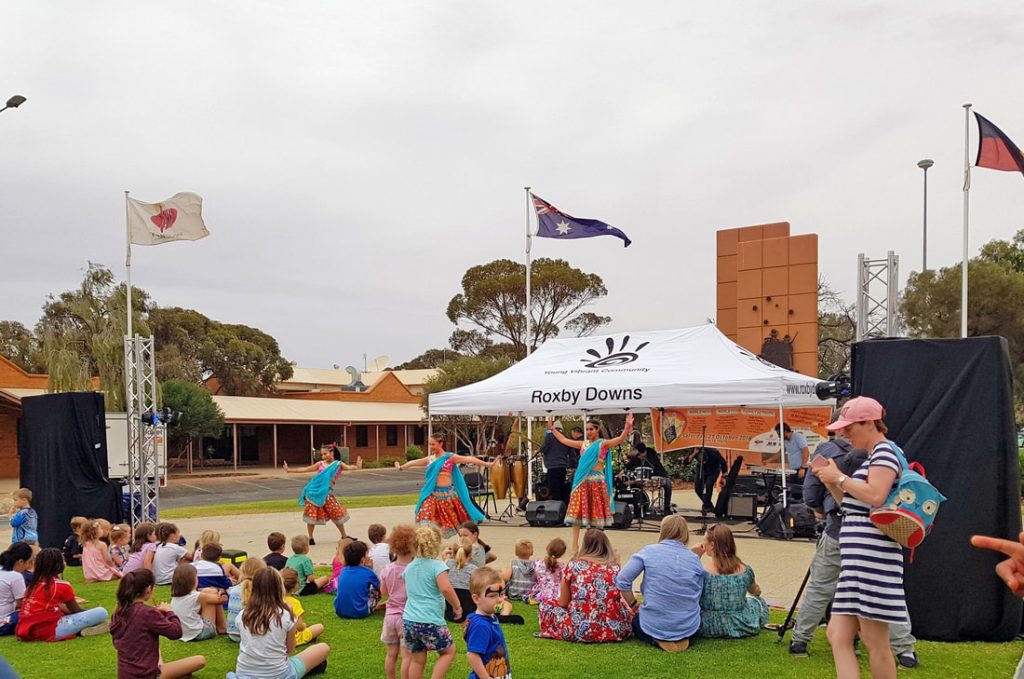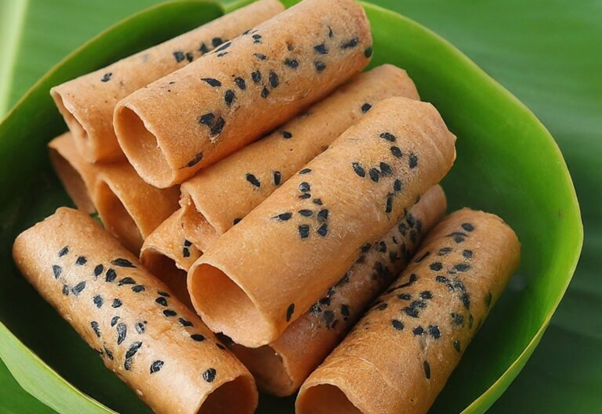The dragon pots of Ratchaburi | What is Ohng Mungkorn?
Thailand, although not a large country, has 77 provinces that span across a variety of terrains – from dense jungles to mountainous and coastal areas. With this, many provinces have made a name for themselves due to the abundance of certain ingredients or materials surrounding them. When talking about giant river prawns people will usually think of Ayutthaya, or Chanthaburi when pad thai ‘sen chan’ is mentioned. For Ratchaburi, a province directly west of Bangkok, an unexpected product was born over 90 years ago. Since then, the province has been known all over Thailand as the home of dragon pots or ‘ohng mungkorn’ in Thai. (‘Ohng’ literally translates to water pot or jar and ‘mungkorn’, dragon.)
A row of traditional dragon pots (Image source | Rueangsil Potter)
Growing up in Bangkok I would see these brown earthen pots with yellowish dragon motifs everywhere, we even had a few plant pot versions lining our front garden growing mini mandarins and lime. Other houses had water plants like lotuses and some turned them into fish bowls with little colourful guppies in it.
When I visited my nanny’s hometown in rural Thailand over 20 years ago, showers were still outdoors and large dragon pots were commonly used to store water. You would scoop water from the pots with a handheld bowl and splash that over yourself, it was so refreshing! Just outside their wooden house was a smaller pot next to the steps, these were also for storing water and for cleaning your feet before entering the house. Nowadays her dragon pots collect rainwater for watering plants as a plumbed indoor shower replaces them.
Can you spot the 4 dragon pot plants to the right? (Image source | The Cloud)
A re-creation of the outdoor showers at a farmstay in Thailand (Image source | Khon Khee Tiew)
Before ‘ohng mungkorn’ became a household name all over Thailand, people looked to pottery and ceramics imported from China, believing that those were the best quality for water storage. Thailand goes through a wet and dry season and before piped water became widely available, collecting and storing water was a crucial part of life.
In 1933 two Chinese potters by the name of Tia Hong and Ung Zi Meng emigrated from China and settled in Ratchaburi. Perhaps it was destiny, the red clay they found in the area turned out to be perfect for pottery – it has good texture, colour, and can be fired at high temperatures making them very strong. (One of their descendents even claimed that the clay from the neighbouring provinces wouldn’t have worked). Together they set up a factory and started making pots.
A boatload of pots travel up and downstream to be sold (Image source | Pottery Legend)
More and more factories opened up in Ratchaburi as the demand grew, however the pots didn’t always have dragons on them. In Chinese culture, images of dragons are very desirable as they symbolise good luck, protection and prosperity. Perhaps this is why dragon pots quickly gained popularity in the area and all over Thailand.
Making them is however not an easy task, it is labour intensive and requires skilled artists. After collection of the clay, it goes into a pit for a couple of days to age and ferment until evenly soft. This is then mixed and hand formed into the desired shape, smaller ones are thrown on a potter’s wheel and larger ones are sculpted layer by layer. The next step is to make sure the surface is smooth before decorations are added on. Using lighter coloured clay, artists add dragons and other patterns by using their hands and fingers. Once dried, the pot is glazed and fired in a large wood fired kiln called a dragon kiln.
Throwing a pot on the potter’s wheel (Image source | Thairath)
A skilled artist carefully paints a dragon with her hands (Image source | Rueangsil Potter)
A model replica of the dragon kiln at Ratchaburi’s pottery museum (Image source | Thanunporn Yoo)
You might be surprised to know that despite all the technological advancements in the last 90 years, these factories in Ratchaburi still produce dragon pots in mostly the same way. This knowledge has been passed down from generation to generation but unfortunately it is increasingly difficult to keep the craft alive. Due to modernization, demands have been dwindling and although dragon pots have become part of Thai culture, only a few dragon pot factories remain today.
Want to learn more about the history of dragon pots? Visit a pottery museum in Ratchaburi or book a factory tour!
Some of the dragon pots I see on my morning walk at the local park.
Article by Oun V.
References


